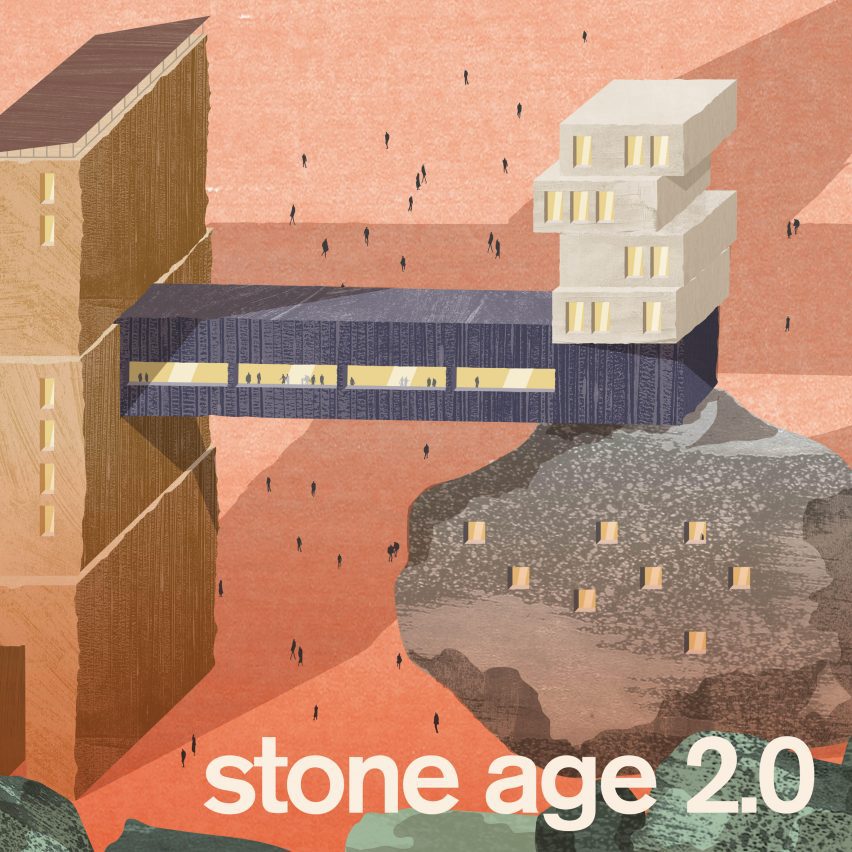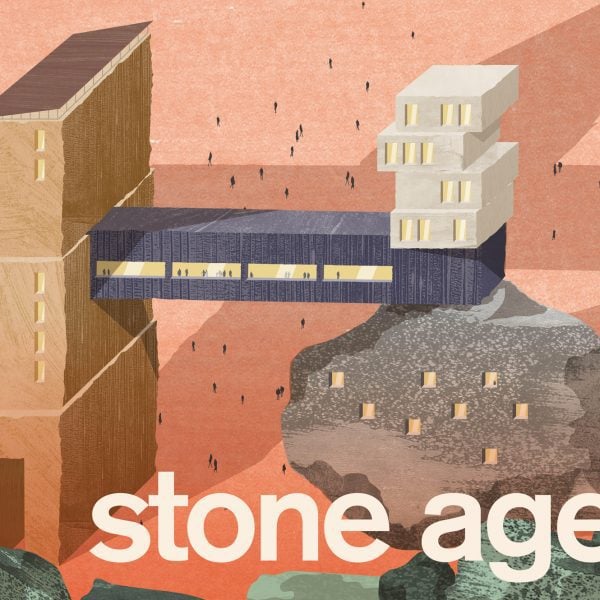Can stone be a viable trendy constructing materials? Dezeen’s Stone Age 2.0 collection explores the fabric’s re-emergence and potential to be a sturdy, low-carbon various to metal and concrete.
Beginning immediately, our week-long Stone Age 2.0 collection will examine how a small, however rising, group of architects and engineers are rediscovering the potential of one of many world’s oldest constructing supplies.
Extensively obtainable, sturdy and long-lasting, stone was as soon as the go-to materials for millennia, with recorded historic buildings relationship again virtually 10,000 years constructed from it.
Together with home constructions, among the world’s largest and most spectacular buildings have been created from stone. From the Pyramids in Egypt, the Parthenon in Greece and the excessive gothic cathedrals of Europe, notable stone structure is all world wide.
Nevertheless, the fabric’s dominance as a structural materials ended with the rise of concrete and metal, with stone lowered to an ornamental function, typically hiding or enclosing one other structural materials.
Now architects and engineers are aiming to reignite the stone age selling the fabric as a viable structural various to metal and concrete.
Whereas pushed partially by the explanations that led to stone initially being so prevalent – it being robust, plentiful and fireproof – the fabric’s reinvestigation can be pushed by sustainability issues.
The world is slowly going through as much as the fact and scale of the local weather emergency, and designers and engineers are acknowledging the constructed setting’s function in it. The constructed setting reportedly accounts for 39 per cent of global emissions.
That is resulting in severe considering, and rethinking, about materials selections and reinvestigating the deserves of pure supplies resembling timber and cork, that are already in widespread use.
Very like the resurgence of timber as a structural materials, though as but far much less developed, stone is seen by its proponents as a possible method development can scale back its large environmental influence.
Particularly, the proponents of stone say it will probably considerably scale back the embodied carbon of our buildings, principally as a result of it may be utilized in its uncooked, unprocessed type. Embodied carbon refers back to the emissions related to bringing buildings into being versus operational emissions generated throughout their lifetimes.
Some analysis means that stone could reduce embodied carbon emissions by as much as 60-90 per cent when in comparison with customary concrete and metal development.
In fact, questions over the influence of stone extraction and transportation nonetheless must be answered, whereas extra sensible issues over inflexibility and how one can incorporate the fabric inside trendy development techniques are addressed.
In our week-long Stone Age 2.0 collection, we’ll discuss to consultants to analyze whether or not stone can emerge as a viable various, or complimentary materials, to metal, concrete and timber.
Stone 2.0 is the newest Dezeen collection how supplies and know-how are impacting the world we dwell in. It follows a trio of Revolution collection – Timber Revolution final yr, Photo voltaic Revolution in 2022 and Carbon Revolution in 2021.

Stone Age 2.0
This text is a part of Dezeen’s Stone Age 2.0 collection, which explores the potential of stone to be a viable, low-carbon, trendy structural materials.


